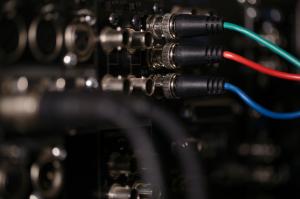Setting the Mood: How Audio Systems Transform Home Gatherings and Events
Audio design shapes how spaces feel. It changes conversation, energy, and even how guests connect”
SLIDELL, LA, UNITED STATES, October 8, 2025 /EINPresswire.com/ -- Modern home design increasingly includes entertainment spaces that rival professional venues in atmosphere and comfort. Central to that experience is sound—how it fills a room, sets tone, and influences mood. From dinner parties to backyard celebrations, the right audio system can transform an ordinary evening into something memorable.— Don Tucker
According to Don Tucker, owner of D&D Audio and Video Solutions in Slidell, Louisiana, the key lies in understanding how sound interacts with both environment and emotion. “Audio design shapes how spaces feel,” Tucker explained. “It changes conversation, energy, and even how guests connect.”
The Psychology of Sound
Sound influences human behavior in subtle yet powerful ways. Tempo, rhythm, and frequency affect mood and interaction. A low-frequency hum can calm the nervous system, while upbeat tempos increase movement and conversation.
During gatherings, sound helps guide attention and energy. Background music encourages flow between conversations. A soft playlist during dinner promotes focus and relaxation. Louder, rhythmic tracks after dessert shift the setting toward activity and movement.
Homeowners often underestimate the impact of acoustics. Poorly distributed sound—whether too quiet in one corner or too loud in another—creates imbalance that subconsciously affects social comfort. Balanced sound, on the other hand, supports a sense of cohesion and ease.
Integrating Audio Into Architecture
Designing an effective home audio system begins with the space itself. Room size, ceiling height, and surface materials all affect sound distribution. Hardwood floors, glass walls, and open layouts reflect sound waves, while carpets, drapes, and furniture absorb them.
Professionally designed systems account for these factors, using strategically placed speakers and calibrated amplifiers to create even coverage. The goal is not volume but clarity—sound that feels present without overwhelming.
In outdoor settings, weather-resistant equipment extends the same experience to patios, pools, and gardens. Proper speaker placement ensures that music carries evenly across open areas without spilling into neighboring spaces.
The Role of Zoning
Larger homes benefit from audio zoning—dividing spaces into independently controlled sections. This allows music to match each area’s activity. For example, low-level background tracks in a living room may coexist with energetic beats near a game area.
Zoning also prevents sound overlap. Instead of one central system blaring at full power, multiple smaller zones maintain balance and control. It’s the difference between creating ambiance and creating noise.
This concept extends beyond events. Zoned systems provide daily flexibility—soft morning music in the kitchen, talk radio in the office, and quiet spaces for reading or rest.
Events, Gatherings, and the “Invisible DJ”
A well-designed home audio setup acts like an invisible DJ. It controls energy without requiring constant attention. Smart automation technology allows playlists and volume levels to adjust automatically based on time of day or guest activity.
During larger gatherings, automation eliminates awkward volume fluctuations. Guests move from indoors to outdoors without abrupt changes in sound quality or tone. The transition feels seamless, allowing conversation and movement to flow naturally.
In homes where entertaining is frequent, pre-programmed scenes simplify the process. A “dinner mode” might lower lights and cue instrumental music. A “party mode” could raise the tempo and activate additional speakers near social areas.
The Human Connection to Sound
Music carries an emotional weight that few other design elements can match. It builds anticipation, nostalgia, and connection. Familiar songs trigger memories, while ambient tones create presence and calm.
At gatherings, sound acts as a social lubricant. It fills gaps in conversation, eases introductions, and encourages rhythm in the room. Even silence, when timed intentionally between playlists, has a purpose—it allows reset, reflection, and renewed attention.
The experience of shared sound builds unity. When a group of people hears the same beat, their heart rates synchronize slightly. It’s biology, not just entertainment. Well-planned audio takes advantage of that phenomenon to create a sense of togetherness.
Technology Meets Atmosphere
Advances in modern audio equipment have made high-fidelity sound more accessible and adaptable. Wireless systems eliminate clutter, while digital signal processors fine-tune audio in real time. Hidden speakers and in-wall subwoofers maintain the visual integrity of the space while delivering depth and clarity.
Voice and app controls now handle complex configurations with ease. A single touch can shift from soft jazz to upbeat funk, or from indoor dining to poolside celebration. The result is an atmosphere that adjusts fluidly to the moment.
In commercial spaces, this same technology guides customer experience. Restaurants, retail stores, and event venues all rely on acoustic design to influence behavior. Homeowners adopting similar principles achieve the same control on a more personal scale.
Outdoor Audio and Louisiana Living
In Louisiana, outdoor gatherings often outnumber indoor ones. Porches, patios, and pools double as social centers for most of the year. Outdoor audio systems must handle both environmental extremes and acoustic challenges.
Humidity, heat, and salt air create wear that demands specialized components. Equipment designed for coastal and humid climates uses sealed enclosures, UV-resistant coatings, and corrosion-proof hardware.
Placement is equally important. Speakers should distribute sound evenly, reaching every listener without disturbing nearby homes. Subtle integration into landscaping—hidden among planters or built into architectural features—keeps aesthetics intact.
For those who spend evenings under the stars, the right outdoor audio system enhances the natural rhythm of Louisiana life.
Sound as Part of Home Design
Integrating audio isn’t just about adding equipment—it’s about building atmosphere into architecture. Thoughtful acoustic planning becomes as essential as lighting or temperature control.
In modern design, technology is moving toward invisibility. Speakers blend into ceilings, control panels disappear into walls, and the system responds intuitively. The goal is not to showcase the technology but to create an environment that feels naturally balanced and comfortable.
Sound has become another layer of home design—a quiet but powerful one. It shapes energy, influences perception, and turns ordinary spaces into memorable experiences.
Conclusion
Across Louisiana homes, gatherings have always centered around conversation, music, and shared energy. The evolution of home audio has simply refined how that experience takes place.
When tuned correctly, sound transforms a space. It moves emotion, enhances connection, and creates a rhythm that unites people under one atmosphere.
As Don Tucker of D&D Audio and Video Solutions emphasizes, the success of every gathering begins with one invisible but essential ingredient—sound that fits the moment perfectly.
Morgan Thomas
Rhino Digital, LLC
+1 504-875-5036
email us here
Visit us on social media:
Facebook
Legal Disclaimer:
EIN Presswire provides this news content "as is" without warranty of any kind. We do not accept any responsibility or liability for the accuracy, content, images, videos, licenses, completeness, legality, or reliability of the information contained in this article. If you have any complaints or copyright issues related to this article, kindly contact the author above.


